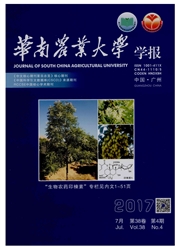

 中文摘要:
中文摘要:
【目的】进一步了解猪伪狂犬病毒新流行株的遗传特征。【方法】对从安徽某猪场分离的1株猪伪狂犬病病毒(PRV)AH株进行遗传进化分析及主要糖蛋白gB、gC、gD、gE的序列分析。【结果】PRV AH株与国内2011年以来的流行毒株非常相似,但与Bartha株及其他国外毒株遗传关系较远;国内流行毒株与Bartha株及其他国外毒株相比,其主要糖蛋白均存在明显的连续氨基酸的缺失和插入,且部分突变位点位于这些糖蛋白的重要功能区。【结论】从分子水平上解析了PRV新流行株与疫苗株Bartha株的遗传差异,为进一步深入研究Bartha株疫苗免疫失败的原因提供了理论依据。
 英文摘要:
英文摘要:
[ Objective ] In order to study the genetic characteristics of the novel epidemic pseudorabies vi- rus (PRV). [ Method ] A PRV strain named PRV AH was isolated from a pig farm in Anhui Province, the phylogenetic tree was constructed and the glycoproteins gB, gC, gD and gE of this strain were analyzed. [ Result] PRV AH was very similar to an epidemic strain which had caused a severe PRV outbreak in China since 2011, but was distantly related to Bartha or other foreign strains. Compared with Bartha and other foreign strains, all PRV strains in China had obvious deletions and insertions of continuous amino acids in the glycoproteins, and some mutations were found in the critical functional regions of the glyco- proteins. [ Conclusion ] This study analyzes the genetic differences between the novel epidemic PRV strain and Bartha strain at the molecular level, which provides a theoretical basis for further clarification of the immunization failure of Bartha-K61 vaccine.
 同期刊论文项目
同期刊论文项目
 同项目期刊论文
同项目期刊论文
 Development of a Direct Competitive Enzyme-linked Immunosorbent Assay Using a Sensitive Monoclonal A
Development of a Direct Competitive Enzyme-linked Immunosorbent Assay Using a Sensitive Monoclonal A 期刊信息
期刊信息
